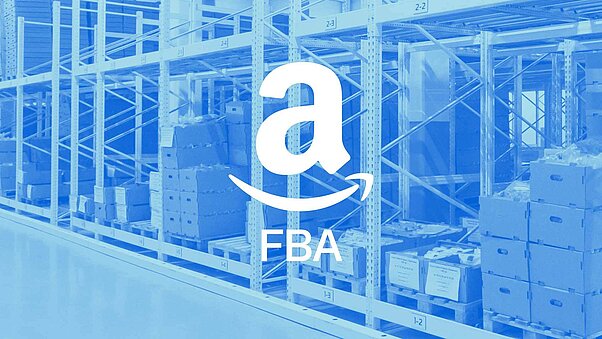DDP vs DAP: The meaning of DDP and DAP shipping

Choosing between DDP (Delivered Duty Paid) and DAP (Delivered at Place) goes beyond logistics—it’s about making smart, informed decisions in global shipping. By breaking down the DDP DAP meaning and comparing both terms, you’ll uncover strategies to ship cost-effectively while staying compliant with international regulations.
In the sections ahead, we’ll look at the pros and cons of each method to help you ship with confidence!
Definition and meaning: What is DDP shipping?
DDP, or Delivered Duty Paid, means the seller takes on the most responsibility in the shipping process. They handle everything—from transporting the goods to the buyer’s location to taking care of import duties, taxes, and customs clearance.
In short, the seller makes sure the goods arrive at the buyer’s address, fully cleared and ready to use. The buyer doesn’t have to worry about any extra costs or paperwork when the shipment arrives.
What DDP means in Incoterms 2025
In the latest iteration of Incoterms, namely Incoterms 2025, the definition and obligations of DDP remain consistent with previous versions. DDP continues to signify that the seller bears the maximum responsibility and risk for the transportation of goods until they are delivered to the buyer at the agreed-upon destination.
- However, it's essential for businesses to stay updated on any revisions or clarifications within Incoterms 2024 to ensure compliance and mitigate potential misunderstandings or disputes in international transactions.
- More about the latest Incoterms for the UK see HERE.
The benefits of shipping with DDP:
- DDP shipping offers distinct benefits for both buyers and sellers. For buyers, DDP provides convenience and peace of mind by transferring the responsibility for import procedures, duties, and taxes to the seller.
This streamlines the purchasing process and reduces administrative burdens, allowing buyers to focus on other aspects of their business operations. Additionally, DDP ensures that goods are delivered directly to the buyer's premises, eliminating the need for additional logistical arrangements or transportation.
The cons of DDP shipping:
- Despite its advantages, DDP shipping has certain drawbacks that buyers and sellers must consider. One notable concern for sellers is the increased liability and risk associated with assuming responsibility for import clearance, duties, and taxes.
Sellers may encounter challenges in accurately estimating and managing these costs, especially in fluctuating regulatory environments or unfamiliar markets. Additionally, sellers bear the risk of potential disputes or delays during customs clearance, which could impact their reputation and relationships with buyers.

What exactly means DAP shipping?
In contrast, DAP, or Delivered at Place, represents a shipping arrangement where the seller is responsible for delivering the goods to a named destination, typically agreed upon with the buyer.
However, under DAP terms, the seller's obligations cease once the goods are made available at the specified destination - be it a port, warehouse, or any other designated location - ready for the buyer to unload.
Unlike DDP, DAP does not require the seller to handle import clearance or pay duties and taxes on behalf of the buyer. Instead, these responsibilities shift to the buyer upon arrival at the agreed-upon destination.
Benefits of DAP:
- DAP shipping comes with several benefits, especially for buyers. It gives them more control over the import process, including customs clearance and related tasks. This flexibility can help reduce costs by allowing buyers to manage things their own way and avoid extra fees or delays.
Another plus: buyers can choose exactly where the goods should be delivered—whether to a warehouse, distribution center, or retail location.
… and the cons of shipping with DAP:
- However, DAP also has its downsides. Buyers take on more responsibility, especially when it comes to handling import paperwork, customs, and following local regulations. If these tasks aren’t managed properly, it can lead to delays or even fines.
On top of that, once the goods arrive at the agreed location, any risks—like damage, loss, or delays—fall on the buyer. That means having good insurance in place is often necessary.
Why do businesses use DDP and DAP?
Businesses opt for DDP or DAP shipping based on various factors, including operational preferences, cost considerations, and risk management strategies. DDP shipping is often favored when sellers seek to provide a seamless experience to buyers by shouldering the burden of import procedures and ensuring that goods are delivered directly to their doorsteps without additional hassles.
- Conversely, DAP shipping may be preferred in scenarios where buyers have the infrastructure and resources to handle import clearance efficiently or wish to have more control over the customs process to optimize costs and timelines.
Direct comparison of DDP and DAP shipping
When comparing DDP and DAP shipping, several key factors come into play.
- DDP offers convenience and simplicity for buyers by transferring the burden of import procedures to the seller, ensuring seamless delivery to the buyer's premises. However, this convenience comes with increased liability and potential costs for sellers.
- On the other hand, DAP provides flexibility and cost-saving opportunities for buyers who can efficiently manage import procedures but requires them to assume greater responsibility and risk for customs clearance and related tasks. Ultimately, the choice between DDP and DAP depends on the specific needs, capabilities, and risk tolerances of the parties involved in the transaction.
Deciding on DDP vs DAP: Factors for your business
When determining whether to utilize DDP or DAP shipping, businesses must evaluate several crucial factors.
- These include the destination country's import regulations and customs procedures, the level of control and visibility desired over the shipping process, the financial implications of duties and taxes, the availability of resources for handling import clearance, and the overall logistical capabilities of both the seller and the buyer.
- Additionally, considerations such as risk tolerance, customer expectations, and competitive positioning should also inform the decision-making process.
Concluding thoughts on DAP vs DDP shipping
In conclusion, the choice between DDP and DAP shipping hinges on a thorough understanding of the responsibilities, risks, and advantages associated with each Incoterm.
- While DDP offers convenience and peace of mind by transferring the burden of import procedures to the seller,
DAP provides flexibility and cost-saving opportunities for buyers willing to take on import clearance responsibilities.
Ultimately, the decision should align with the strategic objectives and operational capabilities of the businesses involved, ensuring smooth and efficient international trade transactions.

FAQ on DDP and DAP: 10 most frequently asked questions
- How do customs duties work under DDP and DAP?
Under DDP, the seller pays all customs duties and taxes. With DAP, the buyer is responsible for those costs once the goods arrive. - Can DDP and DAP impact delivery times?
Yes. DDP tends to be faster since the seller handles everything. With DAP, delays can happen if the buyer doesn’t clear customs quickly. - Are there any specific industries where DDP or DAP is more commonly used?
DDP is common in industries offering full-service delivery, like luxury goods. DAP is often used for bulk shipments where buyers want more control. - How do DDP and DAP affect insurance responsibilities?
In DDP, the seller usually insures the shipment until delivery. Under DAP, the buyer might need extra insurance for the final leg. - What happens in case of damage or loss under both terms?
With DDP, the seller carries the risk until delivery. Under DAP, the risk transfers to the buyer once the goods reach the agreed location. - What was DDU, and why is it no longer used?
DDU meant the seller delivered goods without paying import duties. It was replaced by DAP in 2010 to simplify trade terms. - In which countries is DDP difficult to implement?
DDP can be tricky in countries with strict import laws, local entity requirements, or complex tax systems. - Are there any alternatives if DDP is not feasible?
Yes. DAP is often used instead—goods are delivered, but the buyer handles customs and final delivery. - How does DDP affect international sales contracts?
DDP makes the seller responsible for all costs and risks, which can make offers more appealing but also more demanding. - Can a business still use DDU under current Incoterms?
DDU isn’t official anymore, but businesses can use DAP with contract terms that replicate DDU conditions.
Sources
pixabay royal free pictures
Logsta / Quivo © 2025





